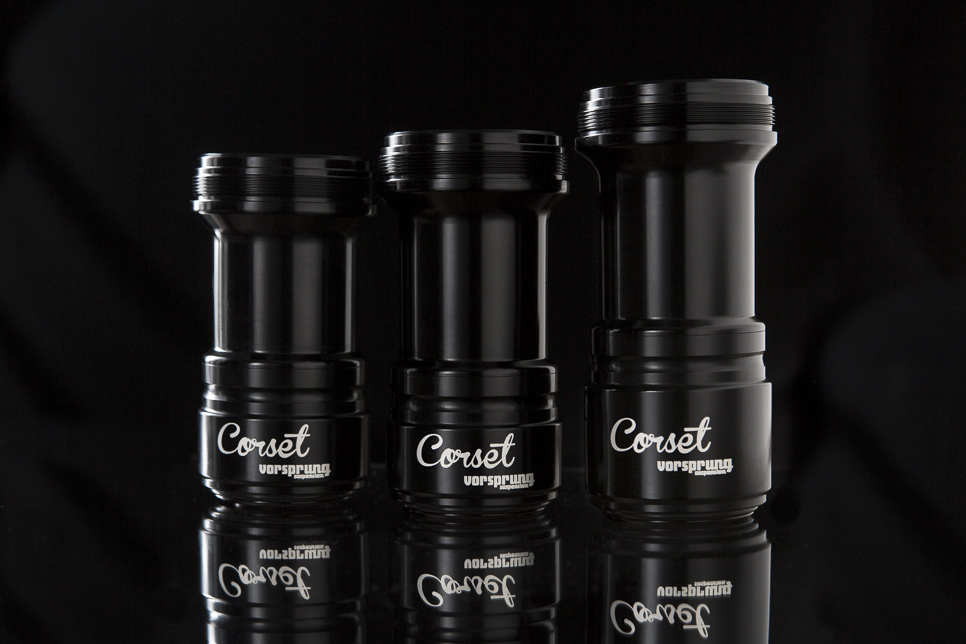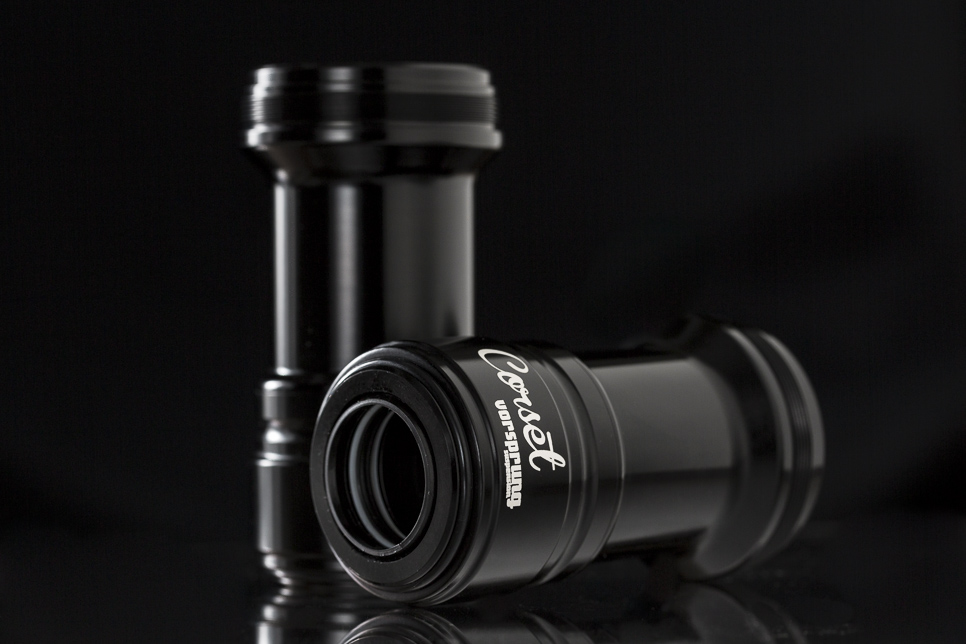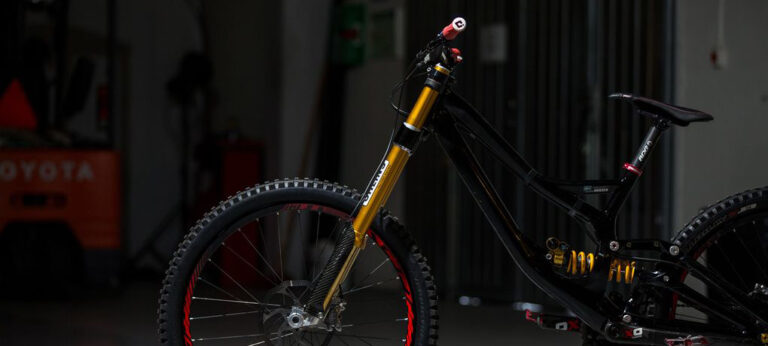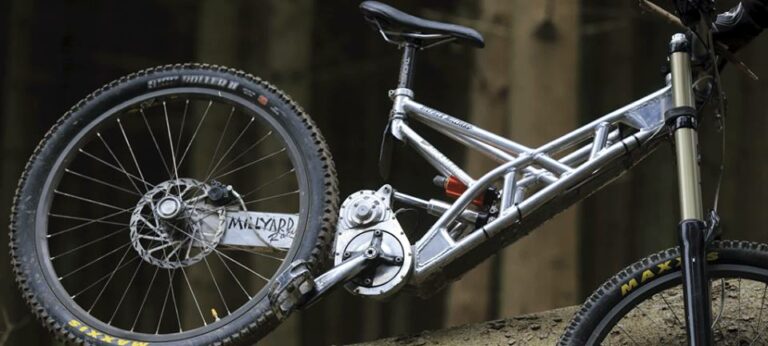
Vorsprung Suspension Corset Fox Air Shock upgrade
We all like a tinker with our bikes here and there, some keep that to a few allen key turns whereas others, sometimes without success, turn every knob and dial to try and get their bikes performing better.
Air shocks have been around for a long time now and it was the introduction of coils to mtb suspension that changed the sport back in the 90’s. The feel of a coil shock can be something air cans strive to achieve but few get it right. With that in mind the guys at Vorsprung Suspension in Canada decided they wanted to try and alter the performance of Fox units with these new Corset sleeves.

They basically replace the sleeve that comes as standard on a Fox shock and doing so will, according the Vorsprung, change the spring curve of the shock to be closer to a coil unit. There should be a few landing in the Dirt office soon to be tested on various bikes against coil dampers so it should be an interesting test to see if they really do make a difference. Here’s all the info from Vorsprung and we’ll keep you updated when we get one on a bike.
Press Release
Vorsprung Suspension is excited to announce the release of its new Corset air sleeves for Fox air shocks. After more than 2 years of development, the Vorsprung Corset air sleeves allow for far less initial resistance than a standard Fox air sleeve, coupled with vastly superior mid stroke support to eliminate that wallowy feel and initial harshness. Long story short, the Corset’s spring curve is now much closer to that of a coil shock.
Designed and tested in Whistler, BC, including racing the 2013 EWS round, the Corset is proudly made in Canada.

What the Corset offers
– Less initial resistance means better traction and small bump compliance
– More mid-stroke support
– Feels more like a coil shock
– Livelier, more predictable feel
– Better big-hit control
– No more preloaded initial feel
– No more wallowy midstroke
– Adjustable ending-stroke ramp using volume spacers (sold separately)
– Compatible with standard Fox air sleeve seals
– Easy to install – kit includes air shaft seals
Compatibility
Models:
Fox Float R, RP, RP2, RP23, RP3, Triad (all years)
Fox Float CTD (Large Volume and Small Volume eyelet types)
Fox Float X
Fox DHX Air
Note: not currently available to suit DRCV shocks. If demand is there, we’ll make them!
Sizes Available:
7.50 x 1.75
7.50 x 2.00
7.875 x 2.00
7.875 x 2.25
8.50 x 2.125 (Specialized Enduro)
8.50 x 2.50
MSRP: $150CAD (about £78 + shipping)
Here’s the science
Air springs traditionally haven’t been very good. In fact, they’ve been pretty terrible. Their severe non-linearity has meant that frame designers and riders alike have struggled for decades to achieve spring rates that, at the very least, don’t suck. That non-linearity, in the past, has been addressed at the end of the stroke by means of altering the air can’s volume using volume-reduction spacers (Fox, Cane Creek and Rockshox all offer kits for this, for their high-end air shocks). This has provided riders and suspension tuners with a way of controlling the end-stroke ramp-up quite precisely, which means you can use all your travel without smashing the bottom out bumper to pieces. Not everything comes well tuned from the factory though, especially if you purchase an aftermarket shock which didn’t come in any way set up for your frame, but at least the means to adjust it exists.
However, even the most finely tuned ending-stroke ramp has never solved the real issue with air springs: traction and support are both poor in the middle of the stroke, and they’re harsh at the start of the stroke. Compared to coil shocks, the difference has been night and day. People have long assumed that air shocks will always feel bad, compared to coil shocks. With a Corset air sleeve, that no longer needs to be true.
The Corset produces a distinctly improved beginning and mid stroke spring curve over standard Fox spring curves. This is achieved by huge reductions in the initial falling rate inherent in any standard two-chamber (positive and negative spring) air spring system, and the result is measurably improved.

To understand the numbers, consider that a coil spring (which we can all agree feels really nice) is completely linear. Its spring rate is constant throughout the stroke. However, a particular standard Fox air spring curve has a spring rate that drops by more than 90% from the beginning of the stroke to a point about 10mm in. That is to say, the initial spring rate is more than 10 times higher than the mid-stroke spring rate! Obviously, this means that either the beginning spring rate is much too high, or the mid-stroke rate is much too low – in fact, both are the case. That’s why your air shock feels stiff to push on initially, and yet isn’t supportive through the middle of the stroke. The following graph is numerically accurate, and explains exactly how big the difference is!

The effects of such a falling spring rate are twofold:
1. Bump compliance early in the stroke totally sucks. Any time the wheel leaves the ground, falls into a hole, or for any other reason extends past the sag point, you are now in a region of travel that is unreasonably stiff. This causes poor traction, poor feel, and a lot of harshness.
2. The mid stroke spring rate is too soft to adequately support you. This is what a lot of riders refer to as “wallowing”.
By correcting this issue and delivering a much more linear early and mid stroke (with ending stroke ramp still adjustable using volume reducers), the Corset creates a livelier, more controlled, smoother and more predictable ride – much more like a coil spring.
We could tell you it’s “exactly the same as a coil”, but even though some of our test riders were hard pressed to tell the difference, that wouldn’t be quite accurate (as you can see from the above graphs), nor actually desirable – if your bike came with a Fox air shock, your frame is (or should be) designed around the end stroke ramp up of that air shock. Using a 100% linear spring would not provide the bottom-out resistance that an air shock can deliver, which would actually harm performance in many cases.


